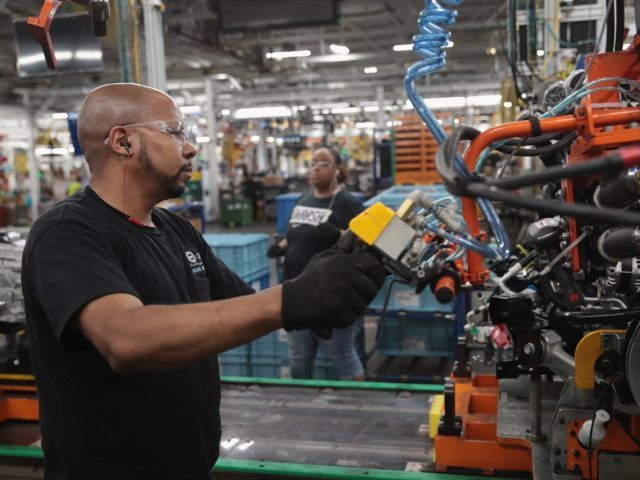Job openings in the manufacturing sector rose in July to the highest level on record.
Manufacturing job openings jumped to 522,000 from 515,000 in the prior month, the Department of Labor said Tuesday in its monthly Job Openings and Labor Turnover Summary. A year ago, manufacturing businesses had 488,000 openings.
The gains to manufacturing came entirely from durable goods jobs, which rose from 315,000 to 322,000. Nondurable openings ticked down from 193,000 to 191,000.
The figures for manufacturing suggest that some of the concerns over the manufacturing sectors health may be overstated. As well, they indicate that tariffs are not playing a central role in the troubles of the sector
When Trump announced that it would impose tariffs on steel and aluminum, critics immediately said that while they might help steel and aluminum producers, they would be a net loser for America because metals-using manufacturing employs far more Americans than metals-producing. The higher price would cause employment in metals-using manufacturing to contract, the critics charged.
That has not happened. Job openings in durable goods have now expanded for five-months in a row.
Construction openings jumped from 331,000 in June to 373,000, an impressive gain. The Job Openings and Labor Turnover Summary figures are seasonally adjusted, which means the government attempts to smooth out seasonal fluctuations in the data.
Manufacturing and construction outperformed the broader economy in July. Overall, job openings in the U.S. fell slightly in July from 7.248 million to 7.217 million. June was revised down from the initial report of 7.348 openings. There are 1.154 more openings than unemployed people in the U.S., a sign of a strong labor market.
Job openings fell among wholesalers, government, and financial services. Openings rose in the West and Midwest while falling in the South and Northeast.
Hires soared 4.1 percent in July to 5.953 million. That indicates that some of the strain on the economy from the tight labor market may be easing, as employers are finding workers to fill open jobs. The gap between hires and openings narrowed to 1.264 million, the narrowest spread in more than a year.
Quits rose sharply in the month to 3.592 million, a record high, pushing the quits rate up 1 tenth to 2.4 percent. Among private-sector workers, the rate rose to 2.6 percent. This is considered a sign of strength for the labor market because it reflects worker confidence and ability to leave their job voluntarily.
Layoffs remain very low. The number of layoffs and discharges was little changed in July at 1.8 million and the layoff rate was 1.2 percent. Layoffs in information technology rose by 20,000 and increased in the West. Layoffs in manufacturing rose to 116,000 from 109,000 the prior month, a 0.9 percent layoff rate, but remain below the year-prior level and below the level for the broader economy.

COMMENTS
Please let us know if you're having issues with commenting.